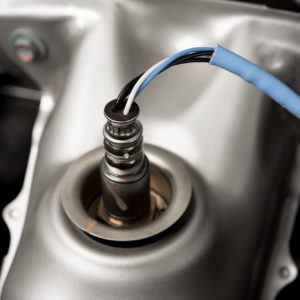Electric vehicles (EVs) have a low-voltage (LV) system and a high-voltage (HV) system. To prevent electrical issues and accidents during maintenance and repair, manufacturers deliberately separate the HV system from its low-voltage counterpart and the frame of the EV.
If the PCM detects an isolation fault in the high-voltage system of the hybrid EV, its diagnostics will log a P0AA6 code.
What Does the P0AA6 Code Mean?
The diagnostic trouble code (DTC) P0AA6 indicates “Hybrid Battery Voltage System Isolation Fault.” It applies to electric vehicles, especially models with hybrid powertrains.
In both hybrid and all-electric vehicles, the high-voltage system is mounted on the body or chassis. It is a floating system–while its components are attached to the chassis, they do not rely on the chassis to electrically ground themselves.

Manufacturers design their EVs with a minimum level of resistance–also called electrical isolation– between the high-voltage system and the vehicle’s chassis.
If the high-voltage system wasn’t electrically isolated from the rest of the vehicle, its powerful current could make the vehicle unsafe.
The PCM regularly checks the high-voltage system. If it detects an isolation fault, it will set the generic code P0AA6.
Note: The definition of code P0AA6 can differ according to the vehicle manufacturer. Check the appropriate repair manual or repair database for the exact code definition.
What are the Common Causes of a Code P0AA6?
- A fault with the high-voltage battery
- Issues with the high-voltage cables
- A problem with the high-voltage electronics or control system (e.g., a shorted traction motor, failed system main relay, faulty high-voltage A/C compressor, etc.)
- An issue with the battery control module

What are the Common Symptoms of a Code P0AA6?
- Illuminated warning lights
- High-voltage system stops working properly
- Battery fails to charge
- Vehicle won’t start
How to Diagnose the P0AA6 Code
Many vehicle makes and models can log a P0AA6 code. However, the exact circumstances that trigger the generic code can vary between vehicles. A diagnostic process that works in one case can fail to find any problem in another vehicle.
Bring your vehicle to a professional mechanic for a diagnostic test if you cannot do it yourself. Otherwise, you can go ahead and evaluate the issue yourself. To help you get started, here is a video that can give you an idea of what the process might involve:
How to Fix the P0AA6 Code
Trying to clear a P0AA6 code can prove difficult if you lack the tools and know-how to test the high-voltage system. In most cases, it’s best to leave the job to professionals. If you are a DIYer with enough technical knowledge and hands-on experience who can test and replace your vehicle’s high-voltage system, it’s a good idea to refer to the vehicle’s repair manual or an online repair database.
Any information provided on this Website is for informational purposes only and is not intended to replace consultation with a professional mechanic. The accuracy and timeliness of the information may change from the time of publication.



















Very good info,